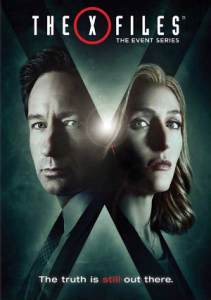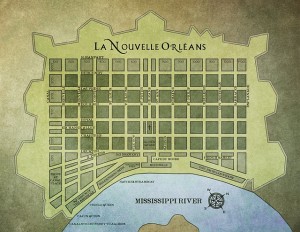Genetic engineering is one of the oldest human technologies dating back some 15,000 years. Yes, you read that correctly; I hope. Mesolithic was the era and the descendants of the wolves to first scavenge off the refuse of human communities were the target. While the exact series of events are debated, the fact is, around that time some bloodlines of wolves became accustomed to humans and eating what humans provided, overcoming one of the most crucial barriers between “wild” and “domesticated”, the acceptance of humans as the provider of food. Once this happened, the breeding of wolves into dogs and the hundreds of varieties that we know today really took off and arguably the most successful partnership between two species began.

The modern golden and sweet corn was engineered from a grass, yep, grass, called teosinte in the Americas about 7,000 years ago. The modern corn plant couldn’t possibly survive on it’s own in the wild and is a decidedly vulnerable and ill-fitted for survival plant. Think about it, ever seen corn in the wild? This plant however has become a centerpiece of our diets and our industries; the debate as to whether this should be the case won’t be addressed here but is something you should look into. Seriously; educate yourselves, people!

Starting an article focused on morphological freedom; the freedom of sapient species to alter and change their physical bodies as they see fit to do so; with dogs and corn may seem a bit odd. These two facts establish a baseline of fact; the human race has been modifying other species of both plant and animal persuasions for millennia and getting upset because we’re more efficient at it now won’t change what is an expression of our fundamental nature; adaption. Except we’re not adapting ourselves, we’re adapting everything around us. This is the seed that has grown into the fear and loathing of human modification and postnatal physiological alteration; that’s a fancy way of saying gender reassignment surgery.
Oh my people, you’ve stepped into it now as the trap snaps shut with Eclipse Phase, transhumanism, and a current politically hot issue coming right at you, so let’s do this. The idea of changing our bodies brings out more resistance in humans than the idea of altering ourselves mentally if the prevalence of mind-altering drugs both legal and illegal is any indicator. Why is this the case? Primal instinct. Our sentience and sapience is a new edition to this gene code carrying transport that is our bodies and seemingly we have far less of a reaction to adjusting our mental performance while the idea of transgender makes the skin crawl up your spine.*(Editor’s Note, thankfully, not everyone has such a reaction.) As a note the reaction your baser instincts have doesn’t make you a bad person; what you choose to do with that reaction determines the kind of person you are.
The history of Eclipse Phase doesn’t record when the first political shots were fired in the battle for morphological freedom, but if it’s the same as our own reality then I can understand the desire to hide that it was over bathroom usage. The result of that inevitable war is the rampant morphological freedom to be found in the game books as the selection of bodies or “morphs” continues to expand. This continuing growth of selection makes absolute sense from all angles; the Hypercorps would offer varieties of the same morph, much like a modern car lot would offer a selection of the same model with small adjustments and modifications which would create a multitude of choices, never mind the cosmetic choices. Would you like a body with cat eyes? Perhaps you’d care to see that model in the neon pink fur? We used a sea coral gene line to create the fluorescing effect in the fur which actually has a cellular nature similar to fish scales but we were able to maintain that soft RealFr™ feel. Let’s discuss terms; lease or buy?

Because why buy when you know you’ll want to replace that body after a few years when you become bored with it? Or the new model arrives with gecko pads for an incredible climbing experience? The advertising would feature a neon pink cat like morph dangling from the cliff face of Olympus Mons while Roar by Katy Perry plays in the background. Also, consider that manufacturers wouldn’t build these bodies to last knowing that you’ll want a new one, whether a year later or ten, and Posthuman Studios has acknowledged this beautifully with the Planned Obsolescence trait. While most commonly associated with the Ruster morph, this should be a trait we see in almost all high performance morphs, especially those sold by Hypercorps. The same logic that powers the light bulb industry would most definitely power the morph manufacturing sector. While a morph that lasts a hundred years with minimal effort can be manufactured there isn’t a profit in a consumer base that’s only shopping on a centennial basis and so the corporations continue to their religion of profit in all things. So surely the anarchist outer system filled with free-thinkers, post-scarcity economics, and readily available means of production have created an environment where a single body can last and is more importantly socially acceptable and even encouraged?

Unlikely, friend; as the ever expanding need for new experiences in the face of eternity will fuel a constant desire and even need to upgrade, expand, alter. There’s little difference between the scum barge filled with sapients changing bodies in a constant desire for new experiences and the kids purchasing the latest iPhone because it’s the latest. They’re both craving the new, the different, and to feel they belong to a group not like any other. The consumer mentality is a weakness of humanity and doesn’t dissolve into the background because there aren’t corporations to take advantage of it. While the books of Eclipse Phase and the adherents of transhumanist thinking would have you believe that “mom & pop” and “grass roots” would be the best descriptions of their post-scarcity economy, the reality is the scarce resource in a post-scarcity economy would become reduced down to fundamentals; time and knowledge. The specialized skills and services and techniques used in the production of goods would become the most highly valued part of any exchange. The reputation system in Eclipse Phase demonstrates that beautifully and, if anything, is simpler than what would be the reality.
The technological level painted by Posthuman Studios doesn’t allow for subsistence economics or desperate survival in the face of unavailable staples like food or water; the technological level presented means that all basic and necessary survival items, like food or water, are readily available to all. In order to make a setting where getting your next meal is important you would have to remove the technological level and this has an impact on economics as well. The skill of a talented chef is more valuable than the ingredients they are working with. What is important to the chef however is a bit different; more knowledge to increase his own skills, a more productive morph, better enhancements for tracking the goings on of the kitchen, better multi-tasking software. The economy would become a series of specialists offering valuable one-of-a-kind items and mass produced boring items of dubious quality. For the first time, quality would overpower quantity as the primary motivator of profit and nothing would be more valuable and profitable than morphs. A product that is literally the experience of life with the additions of improving quality of skill and performance in the areas most profitable to the owner has no analogue in our modern day; the value cannot be calculated.

The transhumanist philosophy uses morphological freedom as a supporting pillar, a primary tenet of the philosophy. While there’s this seeming assumption about medical advancements that will defeat aging, overcome cancer, and prevent all illness there’s seems this underlying drive, need, for true morphic freedom. There are a number of hurdles and concerns to be overcome for this to come to pass. Our minds operate with our bodies, our minds rely on the chemical messages and sensory data of our birth bodies and sends commands with so much ease to our various organs because both body and mind grew together. A process that creates a vast amount of integration, a perfect homeostasis between mind and body which is the result of and part of the process of our evolution. In essence we would need to learn every trick that evolution has developed through trial and error over hundreds of millennia in order to fulfill the transhumanist desire and we’ve only just barely begun. The technological underpinnings for such ease of transference of an adult mind are mysterious and distant and Eclipse Phase doesn’t focus on the technology and instead focuses on how the human subject is reacting to something. That is something Posthuman does very well; bringing the focus back to the human face.
The face of that human and in fact all of humanity in the Eclipse Phase universe is one constantly shifting between the wildly variable morphs that have become available. The societies that cover the solar system are where those who refuse to change their bodies are the strange and the weird, a far cry from the modern world where the idea of gender has created so much furor that you can hardly hear the few reasonable adults speaking. This is the ideological battle that’s commencing with the modern age as the first skirmish and Eclipse Phase as one possible outcome. There are centuries yet before we even come close to the morphological freedom that Eclipse Phase enjoys, if it’s even possible, but the potential for such is grandly done in Eclipse Phase.
Next time we’re bring neural programming, morph engineering, and the endless human need to meddle together and talking about uplifting non-sapient species. Yeah, ethics!

Ewwwww…gross.
Justin has been playing, running, and designing games since he was 14. He enjoys reading, writing, eating, and sleeping. He also enjoys a good think but not too often as he’s very heat sensitive and doesn’t want his brain to boil over.




























